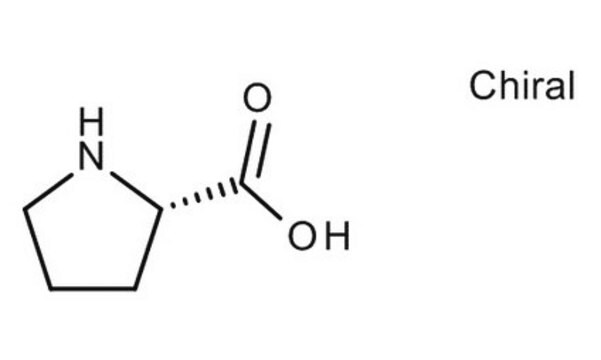190764
2-Propanol
≥99.5%, ACS reagent, suitable for RNA extraction
Synonym(s):
isopropanol, sec-Propyl alcohol, IPA, Isopropanol, Isopropyl alcohol
Sign Into View Organizational & Contract Pricing
Select a Size
All Photos(3)
Select a Size
Change View
About This Item
Linear Formula:
(CH3)2CHOH
CAS Number:
Molecular Weight:
60.10
Beilstein:
635639
EC Number:
MDL number:
UNSPSC Code:
12352104
PubChem Substance ID:
NACRES:
NA.21
grade:
ACS reagent
technique(s):
RNA extraction: suitable
bp:
82 °C (lit.)
vapor pressure:
33 mmHg ( 20 °C)
44 mmHg ( 25 °C)
44 mmHg ( 25 °C)
Recommended Products
Product Name
2-Propanol, ACS reagent, ≥99.5%
grade
ACS reagent
Quality Level
vapor density
2.1 (vs air)
vapor pressure
33 mmHg ( 20 °C)
44 mmHg ( 25 °C)
Assay
≥99.5%
form
liquid
autoignition temp.
750 °F
expl. lim.
2.0-12.7 %, 93 °C
technique(s)
RNA extraction: suitable
Looking for similar products? Visit Product Comparison Guide
Related Categories
General description
2-propanol, also known as isopropanol or Isopropyl alcohol, is a secondary alcohol, colorless liquid, widely used as a solvent and intermediate in organic syntheses, miscible in solvents such as water, ethanol, ether, ethyl acetate, THF, and chloroform.
Application
Isopropanol can be used in many different applications due to its properties
- Solvent in organic synthesis
- Chemical intermediate
Features and Benefits
ACS solvents meet or exceed the high standards of the American Chemical Society (ACS) ,with test specifications that are specialized to every compound. According to the American Chemical Society, ACS reagent grade implies that it is a substance of sufficient purity to be used in most chemical analyses or reactions.
Packaging
Disclaimer
The product is not intended for use as a biocide under global biocide regulations, including but not limited to US EPA′s Federal Insecticide Fungicide and Rodenticide Act, European Biocidal Products Regulation, Canada’s Pest Management Regulatory Agency, Turkey’s Biocidal Products Regulation, Korea’s Consumer Chemical Products and Biocide Safety Management Act (K-BPR) and others.
greener alternative product
Product No.
Description
Pricing
related product
Product No.
Description
Pricing
Signal Word
Danger
Hazard Statements
Precautionary Statements
Hazard Classifications
Eye Irrit. 2 - Flam. Liq. 2 - STOT SE 3
Target Organs
Central nervous system
Storage Class Code
3 - Flammable liquids
WGK
WGK 1
Flash Point(F)
53.6 °F - closed cup
Flash Point(C)
12.0 °C - closed cup
Choose from one of the most recent versions:
Already Own This Product?
Find documentation for the products that you have recently purchased in the Document Library.
Customers Also Viewed
Felix Moltzahn et al.
Journal of visualized experiments : JoVE, (54)(54), doi:10-doi:10 (2011-08-19)
The broad involvement of miRNAs in critical processes underlying development, tissue homoeostasis and disease has led to a surging interest among the research and pharmaceutical communities. To study miRNAs, it is essential that the quantification of microRNA levels is accurate
Michelle T Paulsen et al.
Methods (San Diego, Calif.), 67(1), 45-54 (2013-08-27)
Gene expression studies commonly examine total cellular RNA, which only provides information about its steady-state pool of RNA. It remains unclear whether differences in the steady-state reflects variable rates of transcription or RNA degradation. To specifically monitor RNA synthesis and
A study of anatase-supported Mn oxide as catalysts for 2-propanol oxidation.
Gallardo-Amores JM, et al.
Applied Catalysis. B, Environmental, 22(4), 249-259 (1999)
Highly efficient synthesis of cyclic ureas from CO2 and diamines by a pure CeO2 catalyst using a 2-propanol solvent.
Tamura M, et al.
Green Chemistry, 15(6), 1567-1577 (2013)
Electrochemical photocatalytic degradation of dye solution with a TiO2-coated stainless steel electrode prepared by electrophoretic deposition.
Lin WC, et al.
Applied Catalysis. B, Environmental, 140, 32-41 (2013)
Our team of scientists has experience in all areas of research including Life Science, Material Science, Chemical Synthesis, Chromatography, Analytical and many others.
Contact Technical Service




